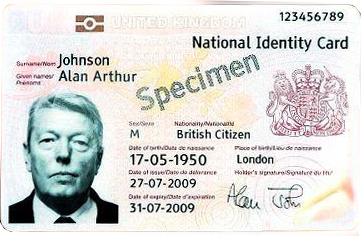Historic sexual offences
 |
| We must decide on the best way to use limited police resources |
The police have a lot of work to do and ever fewer police
officers to do that work. Priorities are therefore a must.
If I were a senior police officer, I would want to be
setting priorities to focus on dealing with situations and offences that can
help people who are currently suffering and finding offenders where there’s
actually a prospect of a conviction following.
By and large I’m sure this is what the police do. But,
they also prioritise historic sexual offences. I can understand why they would
prioritise sexual offences, recent ones and cases where abuse is ongoing, but
when it comes to historic allegations I am at a bit of a loss.
Obviously, the victims of these offences may still be
suffering today. That’s terrible. But, when an offence took place decades ago
you have to wonder at the urgency. Take the case I read about from Cambornetoday. A woman says she was sexually assaulted by a man when she was a child. The
offence appears to have taken place sometime between 1974 and 1978, at the time
the report was made that is between 42 and 38 years ago. The suspect was a
lorry driver in his 30s or 40s at the time, so will now be anywhere between 68
and 91 years old. He had short hair at the time, we don’t know what colour the
hair was then and have even less idea what colour it is now, if he even has
any. He was of large build then with a fat face but may not be large now; indeed,
he may be nothing more than bones or ashes for all we know.
We do not know how old the victim was at the time but
given the report gives us a four-year period you have to think that if she wasn’t
old enough to pin down her own age (and thus the year of the attack) then was
she old enough for her account generally and description specifically to be
reliable? If you’re not sure what I mean, go and ask a few young kids how old a
30something is – my nephew amusing estimated that a 50-year-old was in high 80s
the other day and my nephew’s in his mid-teens! My son has no idea how old
anybody is. From my point of view everybody looks younger and younger every
day.
We can assume that the attacker is not known to the
victim else we would expect a name to accompany the very vague description.
So, what are the chances of the police finding the
attacker who is now aged between 68 and 91 years, is of unknown height. He may
be fat but then again might be thin. We don’t know if he’s black, white or blue
and have no clues whether the police should be searching lorry yards or graveyards.
Let’s say they find somebody. How can the victim’s
identification ever be reliable? He will have changed so much in the past
four-decades that he’s unlikely to be recognisable. The police could show her a
picture of their suspect from the time but this raises question about the reliability
of the identification and you’d hope a court would not allow such evidence to
go before a jury – though I wouldn’t put it past many judges.
Assuming the suspect is innocent, what can he say? He can
say, “it wasn’t me” but how can he ever prove that? I know that it is for the
prosecution to prove their case not the defendant but for those of us in the real
world it does help to at least try and show that you’re not guilty in most
cases. What are the chances that any suspect will have a diary from the 1970s
to hand showing where he was each day? He may have been elsewhere but all we
know is that an attack took place sometime in the mid to late 1970s – how can
you ever provide an alibi for that?
These cases have enormous problems for the police in
identifying and then locating an offender. If they are able to name somebody
there are big problems for the prosecution and the suspect. Neither party can
provide any real evidence one way or another.
I acted in an historic rape case years ago. Many of the
allegations were so absurd that the prosecution dropped half of them before trial.
The remaining charges were essentially, “D committed indecent assault/rape on V
between 1980 and 1990”. Impossible for the prosecution to prove or for the
defendant to disprove. But the poor jury are left in the middle asking
themselves whether there really is no smoke without a fire. In that case, they
acquitted of all the rapes and all but one of the identical sexual assault
charges. They convicted on the very last count despite all the evidence being
identical for that charge as for all the others. There was a definite feeling
they did it just in case.
In times of significant cuts to police levels and resources
it is fair to ask what cases should be prioritised. Today the Times is
reporting that the child abuse inquiry by Dame Justice Lowell Goddard has already
cost £18 million despite not having taken evidence from a single witness in the
year it has been ongoing. Clear the investigation into this offence will not
cost so much but it is going to divert resources away from offences that are
currently happening. I’m not convinced that’s a good use of police time.


Comments
Post a Comment